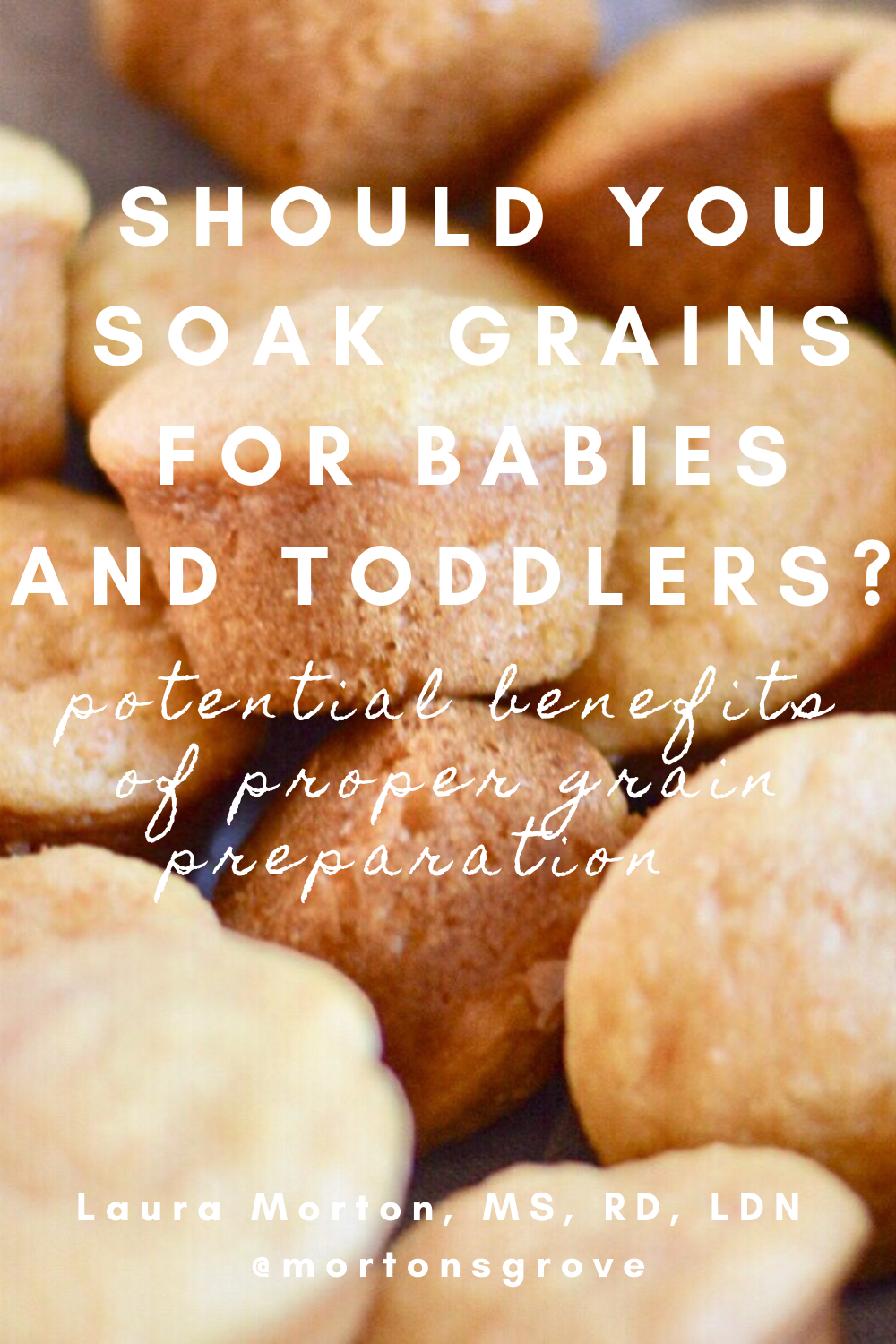The benefits of soaking grains for babies and toddlers
For a while now I’ve gone back and forth on the need to soak grains before eating. It requires planning ahead, something we all know I’m not the best at 😂, and the benefits are always debated. Soooo could it really be worth it?
Something I find interesting about this topic is that in many parts of the world, soaking grains is referred to as proper preparation. Not a special step that only crazy health nuts do, but simply because that’s how you get the best result. In addition to soaking grains for babies, many cultures also ferment grain cereal as a first food, which is right up my alley for sure.
Soaking and fermentation of grains may make them easier to digest, especially for babies. Although the current recommendation is to include grains in baby’s diet for variety and in order to prevent allergies, many sources still believe that babies lack the enzymes needed to break them down (this has largely been debunked). Fermentation and soaking may offer digestion benefits beyond the presence of gut-healthy bacteria, like the breaking down of sugars and starches before eating, making them easier to digest. For this article we will look more closely at the process of soaking.
Why take the time to soak grains?
Whole grains contain phytic acid, an antioxidant that inhibits the absorption of certain nutrients by binding to minerals and making them unavailable. Because of this property, phytic acid is sometimes referred to as an anti-nutrient.
Although phytic acid can interfere in mineral absorption by keeping certain minerals locked up and not as readily absorbed, for most eating a balanced diet this isn’t anything to be overly concerned with. The reason phytic acid in grains may be particularly concerning for small bellies is due to its interference with iron absorption. Iron is essential for babies and toddlers for a lot of reasons but the main one is to support brain development during this time of rapid growth.
Phytic acid may interfere with iron absorption.
Babies who don’t eat meat are at greater risk of inadequate iron absorption due to the presence of phytic acid. Iron in meat (heme iron) isn’t affected by phytic acid. So in a meal of dark meat chicken and brown rice for example, the phytic acid present in the rice might inhibit absorption of the iron in the rice, but not the iron in the meat. Phytic acid is also present in legumes like lentils and beans, staple protein and iron sources for plant based babies.
Simply excluding grains isn’t the answer when it comes to most healthy little ones. Whole grains are not only an important part of a balanced diet, but wheat is one of the big-8 allergens that current research suggests should be introduced early in order to prevent allergic reaction. So how can we make these foods easier to digest and less likely to interfere with nutrient absorption?
One of the easiest ways to reduce phytic acid and lectins (another so called anti-nutrient) and possibly make whole grains easier to digest by breaking down enzyme inhibitors is to soak them overnight. For whole grain flour or oats, this could just mean whipping up the pancakes, oatmeal, or muffins the night before and allowing them to soak in the fridge overnight. For other grains, like quinoa or barley, an overnight soak in water and maybe an acid ingredient such as whey or apple cider vinegar is most effective (the longer the soak, the more the phytic acid is enzymatically broken down).
Meat eating babes likely don’t need to be as concerned about phytic acid interfering with iron, but may consider soaking grains for other benefits. Plant based babies would benefit most from the soaking of iron-containing whole grains, nuts, and especially super iron rich legumes like lentils and chickpeas.
There is a lot of conflicting information out there on the measurable difference in phytic acid levels between soaked and un-soaked grains, but I have found that soaking whole grains isn’t too difficult to keep up with. Like most things, I also don’t do it 100% of the time (for example, last night we had mexican style quinoa with tacos and I just whipped it up from dry quinoa).
I actually enjoy making whole grain muffins or oat flour pancakes the night before and allowing to soak either in the fridge or at room temperature overnight. All I have to do then is get out of bed and heat up the waffle iron. Ultimately, the benefits may or may not outweigh the time and trouble it takes to soak grains but from all of the information I’ve read has convinced me to keep it up. Give it a try for yourself and see if you or your babe notice a difference.








